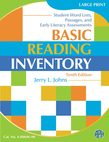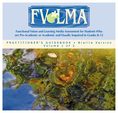- Home
-
Learn
- History of VI >
- Legislation & Laws >
- Vision Professionals >
-
VI Program Resources
>
- Program Printables
- Itinerant Teaching Tips
- Year at a Glance
- VI Program Handbook
- Caseload Analysis
- Organization & Time Management
- Professional Development
- Teacher Standards
- Professional Ethics
- Awards & Recognition
- APH Scholar Program
- Professional Organizations
- Certification Organizations
- Dealing with Challenges
- Professional Publications >
- Relatable Books for All Ages >
- Family Resources >
- Plan
- Basics
-
Teach
- Teaching Strategies >
-
Compensatory Skills Instruction
>
-
Social Skills
>
-
Self Determination
>
- Body Image & Acceptance
- Making Personal Goals
- My Vision Presentation
- My Self-Description
- Create a Personal Data Sheet
- Disclosure Decision
- Disability Statement
- Requesting Help
- Fighting Fears
- My Circle of Support
- Personal Responsibility
- Advocate for Safe Enviroments
- Having Picture Taken
- Coping with Change
- Aging Eyes
- Physical Characteristics
- Political Activism
- Laws Regarding Persons with Disabilities
-
Sensory Efficiency
>
-
Independent Living
>
- Orientation & Mobility Instruction >
- Recreation & Leisure >
-
Career & Vocation
>
-
Grow
- Complete Set Bonus >
-
Recorded Presentations
>
- Webinar: Tips for Being a "Physically Fit" TVI
- Webinar: The Art of Teaching the ECC
- Webinar: Virtual & F2F Strategies
- Webinar: Foundations of Teaching the ECC in the Age of Virtual Instruction
- Webinar: Itinerant Teaching Strategies
- Webinar: Using Themes to Teach the ECC
- Webinar: Conducting a FVLMA
- Webinar: Selecting the Right AT
- Webinar: Developing SMARTER Goals
- Webinar: Determining Service Intensity Using the VISSIT
- Webinar: Activities to Teach the ECC
- Webinar: Accessible Content for BLVI
- Webinar: Accommodations for VI
- Webinar: MIMO Strategies & Activities
- Webinar: SIDPID Strategies & Activities
- Webinar: Standard Course of Study Strategies & Activities
- Webinar: Job Tasks for Job, Career & Life
- Shop
- Jobs
Learning Media Assessment (LMA)By: Carmen Willings
teachingvisuallyimpaired.com A Learning Media Assessment or Reading Media Assessment (LMA/RMA), conducted by the Teacher of Students with Visual Impairments (TVI), is required to determine what kinds of literacy and functional learning materials are appropriate. Although sometimes used interchangeably, the Learning Media Assessment can perhaps best describe the assessment of the learning mode of students who are non-readers or pre-readers. A Reading Media Assessment is a better term for students who are already reading. Either way, it access the way a student learns from the environment. The LMA/RMA is a systematic way of collecting information about sensory preferences, learning environments, and intervention materials and methods. It is used with the Functional Vision Evaluation (FVE) to describe sensory abilities. It identifies sensory preferences, allows the Teacher of Students Visual Impairments (TVI) to understand how to present information to the student. For younger students or those with multiple impairments, the TVI can gain sensory information to the student, understand how to calm or alert the child, and identify adaptations and intervention strategies to promote effective use of senses. In an academic student, it is used to determine the primary or secondary mode for reading or if the student is a dual learner.
The LMA/RMA indicates the use of sensory channels; best learning media; indicators of readiness for a literacy program; initial selection of literacy medium; continuing assessment of literacy media; and literacy tools inventory. When conducting the RMA, be sure to provide a variety of environmental print for the student to read in addition to using a formal assessment tool such as the Jerry Johns Basic Reading Inventory. If the student has been prescribed low vision devices, encourage them to use the devices. Possible media includes: class handouts, class textbooks, leisure books, maps, graphs, dictionary, diagrams, ruler, newspaper, magazine, catalog, ads, phone book, menu, food labels, clothing tags. Be sure to take note of the estimated font size and type. Also be sure to observe the students writing skills including keyboarding skills. Include if the student uses the correct fingering, and what the words per minute were as well as the errors. Observe the student copying information from the board and note the distance. Also observe the student copying information from a text to a separate paper. Note the size of writing, the difficulty and note if it was legible to the student and to you. Characteristics of Print LearnersOn page 43 of Learning Media Assessment of Students with Visual Impairments 2nd Edition, Koenig and Holbrook identify the following characteristics of students who may be print learners.
The student :
Characteristics of Braille LearnersThey identify the following characteristics of students who may be braille learners.
The student:
Additional LMA Resources...

Johns, Jerry. Basic Reading Inventory. Kendall Hunt Publishing, 2012. is a popular informal reading inventory. It helps determine a student's instructional, independent, and frustration reading levels & listening levels based on speed, accuracy, and comprehension. This tool helps determine the most effective literacy modalities for students with visual impairments.

Johns, Jerry. Basic Reading Inventory. Kendall Hunt Publishing, 2012. is a popular informal reading inventory. Large Print and Braille reading lists and reading passages are now available from APH (The Instruction Manual and tools must be purchased separately). It helps determine a student's instructional, independent, and frustration reading levels & listening levels based on speed, accuracy, and comprehension. This tool helps determine the most effective literacy modalities for students with visual impairments.

A great resource on conducting Learning Media Assessments is the Texas School for the Blind (TSBVI) Learning Media Assessment.

Functional Vision & Learning Media Assessment (FVLMA) is an assessment tool, available from APH, that helps practitioners gather, store, track, and analyze information regarding students' functional vision and appropriate learning media.
|
History of Visual Impairments
Professional Practice
Vision Professionals
Professionalism
Teacher Resources
Professional Publications
VI Book Resources
Family Resources
VI Referrals
Medical vision exams
visual diagnosis
fvlma
|
|
Teaching Students with Visual Impairments LLC
All Rights Reserved |
- Home
-
Learn
- History of VI >
- Legislation & Laws >
- Vision Professionals >
-
VI Program Resources
>
- Program Printables
- Itinerant Teaching Tips
- Year at a Glance
- VI Program Handbook
- Caseload Analysis
- Organization & Time Management
- Professional Development
- Teacher Standards
- Professional Ethics
- Awards & Recognition
- APH Scholar Program
- Professional Organizations
- Certification Organizations
- Dealing with Challenges
- Professional Publications >
- Relatable Books for All Ages >
- Family Resources >
- Plan
- Basics
-
Teach
- Teaching Strategies >
-
Compensatory Skills Instruction
>
-
Social Skills
>
-
Self Determination
>
- Body Image & Acceptance
- Making Personal Goals
- My Vision Presentation
- My Self-Description
- Create a Personal Data Sheet
- Disclosure Decision
- Disability Statement
- Requesting Help
- Fighting Fears
- My Circle of Support
- Personal Responsibility
- Advocate for Safe Enviroments
- Having Picture Taken
- Coping with Change
- Aging Eyes
- Physical Characteristics
- Political Activism
- Laws Regarding Persons with Disabilities
-
Sensory Efficiency
>
-
Independent Living
>
- Orientation & Mobility Instruction >
- Recreation & Leisure >
-
Career & Vocation
>
-
Grow
- Complete Set Bonus >
-
Recorded Presentations
>
- Webinar: Tips for Being a "Physically Fit" TVI
- Webinar: The Art of Teaching the ECC
- Webinar: Virtual & F2F Strategies
- Webinar: Foundations of Teaching the ECC in the Age of Virtual Instruction
- Webinar: Itinerant Teaching Strategies
- Webinar: Using Themes to Teach the ECC
- Webinar: Conducting a FVLMA
- Webinar: Selecting the Right AT
- Webinar: Developing SMARTER Goals
- Webinar: Determining Service Intensity Using the VISSIT
- Webinar: Activities to Teach the ECC
- Webinar: Accessible Content for BLVI
- Webinar: Accommodations for VI
- Webinar: MIMO Strategies & Activities
- Webinar: SIDPID Strategies & Activities
- Webinar: Standard Course of Study Strategies & Activities
- Webinar: Job Tasks for Job, Career & Life
- Shop
- Jobs

